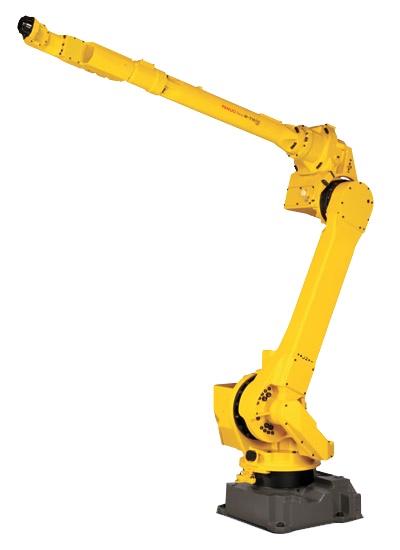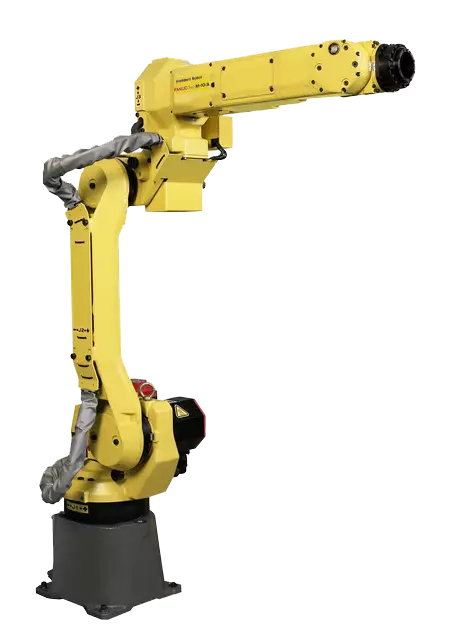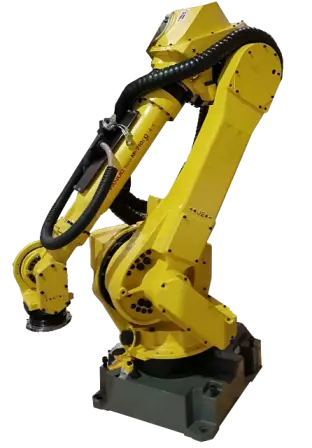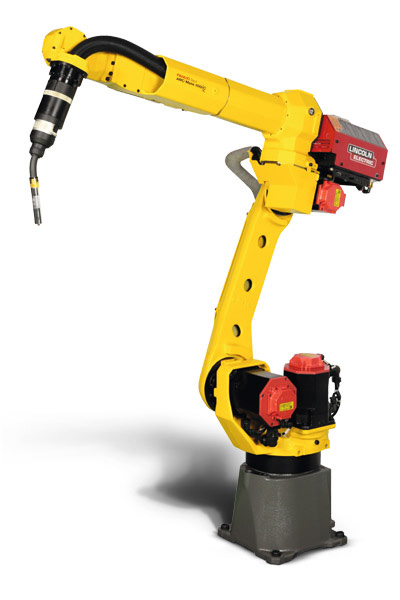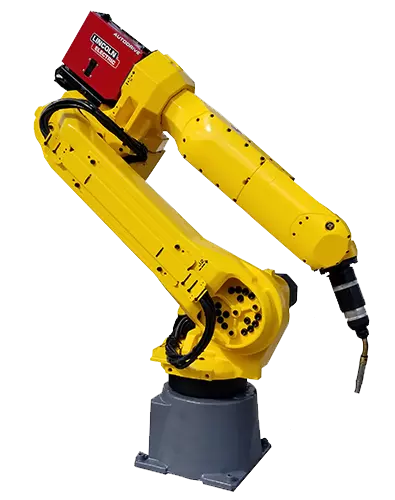Robotic Plasma Cutting vs. Laser Cutting
Cutting applications are vital to most manufacturing processes. The automation of cutting applications through robotics has led to significant improvements in accuracy, quality, and efficiency for manufacturers. Plasma cutting and laser cutting are two of the most commonly deployed robotic cutting applications. Each type offers its own unique features and benefits. Understanding the differences between the two is important in order to best select the correct application for successful optimization of manufacturing processes.
Robotic Plasma Cutting
For robotic plasma cutting an industrial robot is integrated with a plasma torch. Compressed gas is blown through the torch nozzle as an electrical arc turns this gas into a channel of plasma. This channel of plasma serves as the transporter of the electricity that expels out the nozzle when the robot applies the torch to a metal workpiece, melting and blowing away material to produce a cut. The FANUC Arc Mae 120ic and the ABB IRb 4600-20 are both popular choices for automating plasma cutting applications.Robotic plasma cutting can be used to cut both thin and thick metals as long as they are electrically conducive. Plasma cutting robots are capable of easily cutting through metals that are up to 80 mm thick at very fast speeds. By integrating a Motoman EA1900N in a plasma cutting application, manufacturers can see a decrease in production times without compromising quality.
Plasma cutting robots can be deployed to cut curved or angled shapes, since the heat produced is localized to the area being cut. In addition, the small heat-affected zone allows for clean, uniform cuts without distortion of the workpiece. However, plasma cutting processes are best suited for more simple and straightforward shapes. It is also best for cutting metals with reflective or shiny surfaces, as lasers cannot handle such materials.
For those operating within a strict budget, robotic plasma cutting is a good option as it is more cost-effective than laser cutting. The initial investment in equipment as well as future maintenance costs tend to be more affordable.
Robotic Laser Cutting
While plasma cutting utilizes compressed gas for separating metals, laser cutting robots use the power of optical light for cutting through a variety of materials. For robotic laser cutting, a laser cutting head is utilized as the end-effector and integrated with an industrial robot. Focusing optics are projected from the laser head to produce a high-powered laser beam. The robot arm directs the laser beam to the workpiece to burn, melt, vaporize, or blow away material by a jet of gas. The ABB IRB 2400 or the FANUC M-710ic make ideal choices for automating laser cutting applications.Robotic laser cutting is typically utilized for thin materials with a thickness between 0.5 mm to 5 mm. As mentioned above robot laser cutting can cut through a variety of material types including metals, wood, plastic, rubber, PVC, and textiles. This makes this application best for those working with a wider range of materials.
The highly focused light beam allows this application to handle tight part tolerances and produce precise cuts. This makes it ideal for those with detailed or complex workpieces, unlike with plasma cutting. Laser cutting robots can also operate at fast speeds, cutting through 10 m of material per minute.
Higher implementation costs are the main drawback to robotic laser cutting. Costs for laser equipment can be expensive, however, when implemented correctly production optimization can allow manufacturers to capture their ROI quickly.
Robots Done Right is the place to start when it comes to used robots. Contact us if you are interested in buying or selling your used robot.
